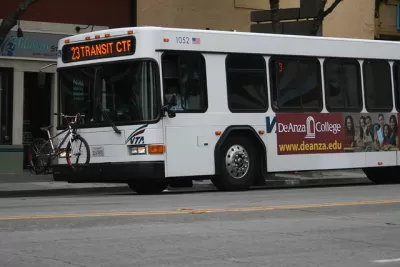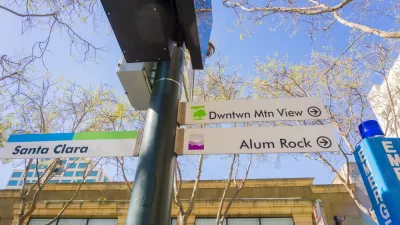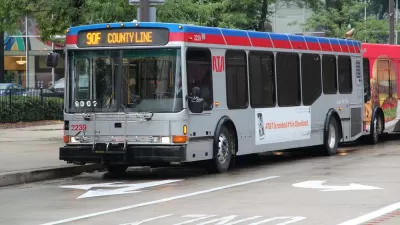A Silicon Valley columnist debates the tough political questions inherent to the process of redesigning local bus service.

Scott Herhold writes a column about the inevitable trade-offs and sacrifices that occur when transit agencies update their bus transit service to a high frequency grid. In this case, Herhold is writing about the process underway at the Santa Clara Valley Transportation Authority in and around San Jose, California.
Herhold has experience relying on one of the lightly used bus routes currently up for debate in the process to redesign the VTA bus system. A familiar name to Planetizen readers, Jarrett Walker, "has suggested a menu of possible changes that would increase service on popular routes and decrease buses on lightly traveled routes."
Despite his reliance on a mostly empty bus route, Herhold makes it clear that he supports the Walker's concept. "The right answer is absolutely clear: To bolster ridership and fare box return, you have to increase the frequency on popular routes and cut service on unpopular routes," writes Herhold.
One of Herhold's primary argument is that the VTA bus system is in crisis, with declining ridership and a faltering business model. The high frequency grid, according to Herhold, offers a chance to make the most of the opportunities borne from crisis, despite the rock and hard place the VTA system finds itself in.
FULL STORY: Herhold: VTA is stuck in a tough situation

Maui's Vacation Rental Debate Turns Ugly
Verbal attacks, misinformation campaigns and fistfights plague a high-stakes debate to convert thousands of vacation rentals into long-term housing.

Planetizen Federal Action Tracker
A weekly monitor of how Trump’s orders and actions are impacting planners and planning in America.

San Francisco Suspends Traffic Calming Amidst Record Deaths
Citing “a challenging fiscal landscape,” the city will cease the program on the heels of 42 traffic deaths, including 24 pedestrians.

Defunct Pittsburgh Power Plant to Become Residential Tower
A decommissioned steam heat plant will be redeveloped into almost 100 affordable housing units.

Trump Prompts Restructuring of Transportation Research Board in “Unprecedented Overreach”
The TRB has eliminated more than half of its committees including those focused on climate, equity, and cities.

Amtrak Rolls Out New Orleans to Alabama “Mardi Gras” Train
The new service will operate morning and evening departures between Mobile and New Orleans.
Urban Design for Planners 1: Software Tools
This six-course series explores essential urban design concepts using open source software and equips planners with the tools they need to participate fully in the urban design process.
Planning for Universal Design
Learn the tools for implementing Universal Design in planning regulations.
Heyer Gruel & Associates PA
JM Goldson LLC
Custer County Colorado
City of Camden Redevelopment Agency
City of Astoria
Transportation Research & Education Center (TREC) at Portland State University
Jefferson Parish Government
Camden Redevelopment Agency
City of Claremont





























